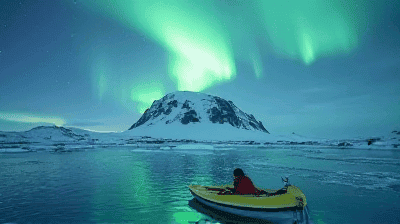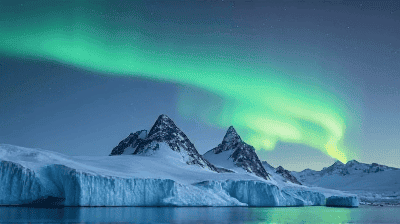Photographing Antarctica: Best Camera Gear, Wildlife Shots & Editing Tips for Polar Light Conditions



Antarctica, the last great wilderness on Earth, offers unparalleled opportunities for photographers. Its stunning landscapes, incredible wildlife, and unique lighting conditions make it a dream destination for anyone passionate about photography. However, capturing the beauty of this frozen continent requires specialized gear, techniques, and editing skills.
Antarctica is a pristine and breathtaking environment characterized by its towering icebergs, massive glaciers, and diverse wildlife. From majestic whales and playful penguins to vast expanses of untouched snow, the visual opportunities are limitless. Photographers who venture to this remote landscape often return with images that resonate with the stark beauty and the delicate balance of life in one of the most extreme places on Earth.
While the beauty of Antarctica is captivating, it also presents challenges that photographers must navigate. The extreme cold, unpredictable weather, and unique lighting conditions can make capturing stunning photographs difficult. Understanding these challenges and preparing accordingly will enhance your photography experience in this magnificent setting.

The choice between a DSLR and a mirrorless camera is largely personal; both have their advantages.
DSLR Cameras: They are often more robust and provide excellent optical viewfinders. Many professionals prefer DSLRs for their durability in extreme conditions.
Mirrorless Cameras: These cameras are lighter and more compact, making them easier to carry during long excursions. They also offer advanced features like electronic viewfinders, which can be beneficial in low-light conditions.
Lenses significantly impact the quality and style of your photographs. When selecting lenses for Antarctica, consider the following:
Wide-angle lenses (e.g., 16-35mm) are essential for capturing expansive landscapes, glacier formations, and large icebergs. They allow you to include foreground interest and create dramatic compositions.
A telephoto lens (e.g., 70-200mm or 100-400mm) is crucial for wildlife photography. These lenses let you capture distant subjects without disturbing them. They are especially useful for photographing seals, penguins, and whales.
For those interested in capturing intricate details of ice formations and textures, a macro lens can provide a unique perspective. Consider a lens with a focal length of 100mm or more.
Due to the varying light conditions and the need for stability when shooting longer exposures or using telephoto lenses, a sturdy tripod is essential.
Tripod Selection: Choose a lightweight yet durable tripod. Carbon fiber tripods are a popular choice for photographers concerned about weight and stability.
Gimbal Head: If you plan to photograph wildlife, a gimbal head allows for smooth tracking of moving subjects while maintaining stability.
Filters can enhance your images and help control light, particularly in the bright, reflective environment of Antarctica.
A polarizing filter can reduce glare from snow and ice and enhance the color saturation of the sky and water. This filter is especially useful on sunny days to bring out the blue tones in glacial ice.
Neutral density (ND) filters are handy for long exposure shots, allowing you to capture the motion of water or clouds while maintaining a proper exposure. They enable you to create dreamy effects with icebergs or waves.
Batteries drain quickly in cold weather. Carry multiple fully charged batteries and keep them warm in your jacket until you need them to ensure extended shooting time.
Bring plenty of high-capacity memory cards, as you’ll want to capture countless images while in Antarctica. Consider using fast cards to decrease the time it takes to write images, especially when shooting in bursts.
Antarctic conditions can be harsh. Consider investing in weather-sealed camera bodies and lenses. Additional rain covers or dry bags can protect your gear from snow and moisture.
Capturing unforgettable wildlife photographs in Antarctica requires patience, respect for the animals, and knowledge of their behavior. Here are some tips for making the most of your wildlife photography experience.
Study Behaviors: Familiarize yourself with the wildlife you are likely to encounter. Understanding their habits can increase your chances of capturing compelling moments.
Time of Day: Early morning and late afternoon are generally the best times for wildlife photography. The light is softer during these times, enhancing the quality of your images.
Maintain Distance: Respect wildlife and their habitats. Use telephoto lenses to capture close-up shots without disturbing the animals.
Stay Low: When photographing wildlife, crouch down to their eye level. This perspective adds intimacy to your images and helps convey their scale and behavior.
Use the rule of thirds to create balanced compositions. Place your subject off-center for a more dynamic image and include elements of the surrounding environment.
Utilize natural lines, such as pathways in the snow or the curvature of an iceberg, to draw the viewer’s eye toward your subject.
Use elements in the environment, such as ice formations or penguin colonies, to frame your subject. This technique adds depth to your photos and can create compelling visuals.
Shutter Speed: Use a fast shutter speed to freeze action when photographing fast-moving animals like penguins diving or seals swimming. A shutter speed of 1/1000 seconds or faster is often effective for wildlife.
Burst Mode: Take advantage of your camera’s burst mode to capture a series of images in quick succession. This technique increases your chances of catching the perfect moment.

The unique lighting conditions of Antarctica can create challenges, but effective editing can enhance your images significantly.
Antarctica's high latitude creates unusual light, especially during sunrise and sunset. Golden hues can saturate the landscape, but the reflective snow and ice can also present exposure challenges.
Familiarize yourself with the histogram to understand exposure levels. In bright conditions, ensure that highlights do not get clipped while retaining detail in shadows.
Popular editing software such as Adobe Lightroom and Photoshop provide powerful tools for adjusting your images. Consider these fundamental adjustments in your editing workflow:
Photography in Antarctica presents an extraordinary opportunity to capture breathtaking landscapes and unique wildlife. With the right camera gear, an understanding of animal behavior, composition techniques, and effective editing skills, you can create stunning images that convey the beauty and wonder of this remote continent. Embrace the challenges of polar light conditions as you embark on this adventure, and let your creativity shine in one of the most awe-inspiring places on Earth. Whether you’re an amateur photographer or a seasoned pro, Antarctica’s breathtaking beauty will inspire you and leave you with unforgettable memories and photographs.